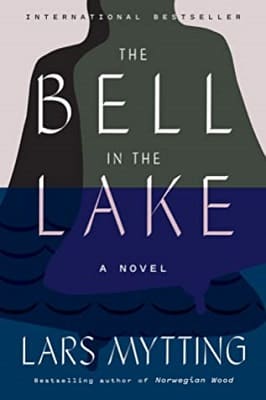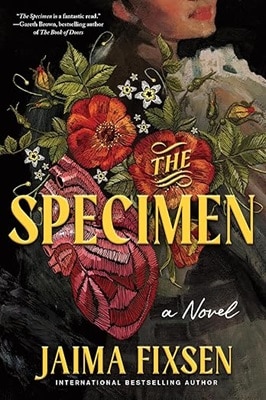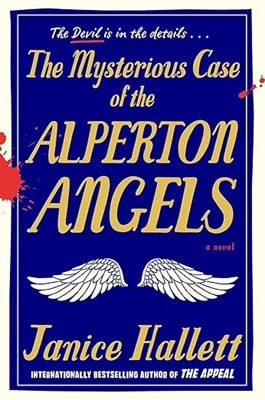
Q&A
Lars Mytting
Interview by Annette Bukowiec
Lars Mytting’s third novel, The Sixteen Trees of the Somme, was published in September 2014, hit the bestseller list after one week and has currently sold over 200,000 copies in Norway and Sweden. It was reviewed as “probably the most riveting novel of the year” by Aftenposten, Norway’s largest newspaper. His latest, The Bell in the Lake is the first in a new trilogy.
Q. The Bell in the Lake sheds light on the stave churches and their disappearance due to the movement toward “modernization” at the time. Once over 1,000 stave churches dotted the Norwegian landscape, now 28. How important was it for you to touch upon this subject?
Lars: First and foremost, I had the idea of a large, dramatic family chronicle that spanned many decades, but I also imagined a clear, strong, physical element in the story; something of great value, that could be a link to the old ages and form an obsession that could be inherited throughout the generations. And so, the church bells and the stave church came quite naturally. The place where I grew up has a stave church, and its spiritual air, (“the cold smell of sacred wood” to paraphrase Joyce) made a lasting impression on me. They are buildings with great natural power that will live longer than any human, and therefore link generations together—remnants of a lost Norway. And church bells also are the sound of very emotional moments, both the joys and sorrows.
The story mentions Johan Christian Dahl, Norwegian painter, who also took part in the preservation of stave churches. He saved the stave church from Vang which was reconstructed in Silesia in 1842. At the time, Silesia was part of the Kingdom of Prussia, now, it’s part of Poland. (By the way, I’m from Silesia). The story also features Germans taking interest in the stave churches. They saw the value in those churches before Norwegians understood the value of their own churches.
Q. Did you intentionally shed light on those who took part in preserving those churches? Would we have 28 churches still, if not for them?
Lars: Oh, we would have fewer than 28 if it was not for them. The very idea of conservation started with Dahl around 1840, and in the year of 1844 a society for preservation of the stave churches was established by another Norwegian painter. But lots of churches were still torn down – the last one in the 1880s, and German artists and noblemen were actually the first to recognize what a great cultural heritage the churches represented. The reconstruction of the church in Prussia is also another cultural connection there that I found the novel could illuminate – and that is the old link between Germany and Norway. Before the second World War, Norway was much more strongly connected to Germany than the Anglo-American world, both in terms of education, culture, and trade, but this changed totally after 1945. An interesting fact with several facets, but historical events themselves are never the driving force of the novel, they are character-driven. But I enjoy putting in surprising facts when the story lends itself to it.
Q. Did this story come easily to you? Did you know from the beginning that you wanted to write a trilogy?
Lars: The main story and its characters came quite quickly, but I am a slave of rewriting, and it took me at least five drafts to find the form it now has. Also, it became difficult to harness all the possibilities when I realized that the main force in the story was enough to power a trilogy. I made several outlines to volume 2 and 3 as the work progressed on this novel, but as I approached the final chapters I found that in order to write honestly about life in those days, especially for women, I needed to take the risk of ending the novel with a much more dramatic event than I first planned. So this first book has a mix between open and closed ending – sort of “over but not over” – and when I wrote volume 2 I actually felt the energy of this ending as a direct driving force for my own writing – I wanted to honour the characters that sacrificed so much in the first volume.
Q. The Bell in the Lake begins with the story about the conjoined sisters and the church bells called Sister Bells which take inspiration from local stories. In regards to this story and the church itself in Butangen, can you clarify what is part of history and what is fiction?
Lars: The tale of the sisters and the bells are two very old stories that have been told in my home district for at least 300 years. They originate from quite humble events – most likely from 1730, when a farmer gave a huge sum of money to forge a new church bell, probably in the hope that it would save his newborn daughter from illness. In the old tradition for oral narratives at home, the storytellers connected stories from various ages and various places into one more powerful story, and I have stepped into this tradition, but in the format of the modern novel.
Q. What role do trolls play in Norwegian culture and in your writing?
Lars: I think we Norwegians have mis-managed this part of our folklore – by selling loads of small tourist gadgets of trolls they have blurred something that was actually a very rich old culture of supernatural creatures. They all had a specific function in the mindset of our rural population, and in the novel there are several characters that firmly believes they exist. Back then, trolls were mostly a danger figure for the naked mountains, but in the forests there were a much richer variety of creatures (Huldra, Nøkken, Busemannen, Kari på Vona) to name a few (I know these names will give no meaning to US readers) and these could pose dangers if you did not pay attention. It was an established system of fear that enabled people, especially children, to navigate in a world without artificial light, in a Norwegian nature that is cold, harsh, and unforgiving.
Q. The Bell in the Lake is the first instalment of a trilogy. I believe there is already Book 2 in Norway. Are you working on Book 3 now?
Lars: Yes, book 2 has been out for some months now and is still on the bestseller lists – it is called “The Hekne Tapestry” in Norwegian – a hint of an old tapestry that is said to foresee the future, but it may get another title abroad. These days I work on volume 3, and most of the plans I have for it seem to be working. But it is much more labour than I imagined, writing a story that will total 1300-1400 book pages is an exhausting task. But satisfying.
Lars Mytting’s Latest
The Bell in the Lake
As long as people could remember, the stave church’s bells had rung over the isolated village of Butangen, Norway. Cast in memory of conjoined twins, the bells are said to ring on their own in times of danger. In 1879, young pastor Kai Schweigaard moves to the village, where young Astrid Hekne yearns for a modern life. She sees a way out on the arm of the new pastor, who needs a tie to the community to cull favor for his plan for the old stave church, with its pagan deity effigies and supernatural bells. When the pastor makes a deal that brings an outsider, a sophisticated German architect, into their world, the village and Astrid are caught between past and future, as dark forces come into play.
Lars Mytting, bestselling author of Norwegian Wood, brings his deep knowledge of history, carpentry, fishing, and stave churches to this compelling historical novel, an international bestseller sold in 12 countries. With its broad-canvas narrative about the intersection of religion, superstition, and duty, The Bell in the Lake is an irresistible story of ancient times and modern challenges, by a powerful international voice.
More Historical Suspense
Advertisement







